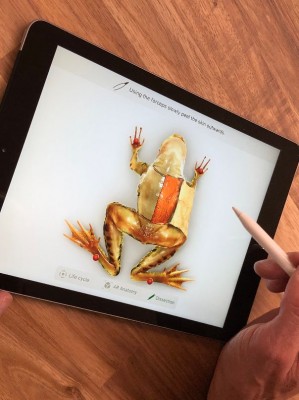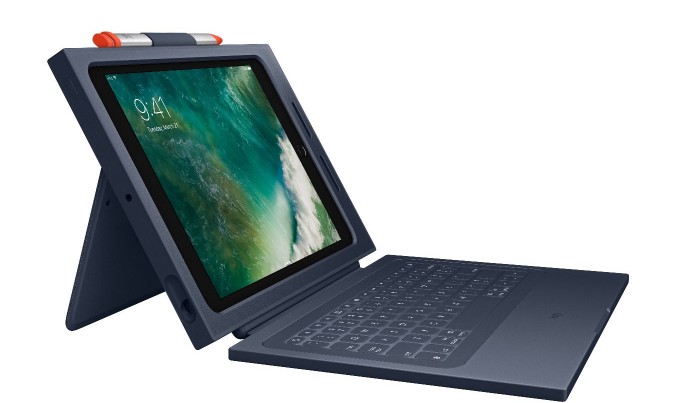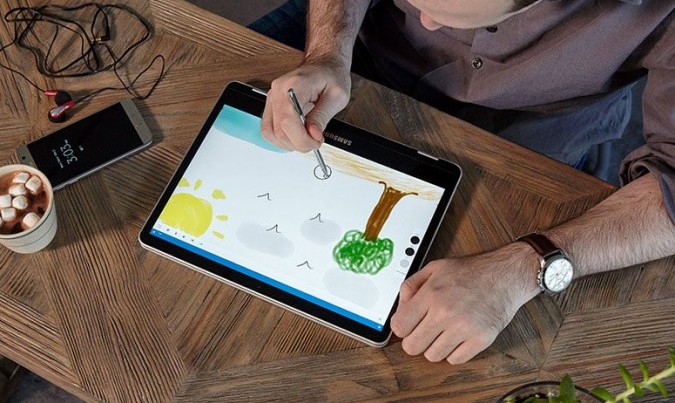The New iPad 'Not Enough' to Beat Chromebooks
Apple helped popularize tablets with the iPad eight years ago. But since then the category has shrunk as phone screens have grown. Who needs a slate when a phablet does pretty much everything you need?
Now Apple is pivoting the iPad toward students to help spur sales while adding new capabilities for both students and teachers. But some analysts and education experts we interviewed don’t sound that bullish on its future. And the momentum around Chromebooks isn't the only obstacle. It's also about how the U.S. approaches education.

On paper, the new 9.7-inch iPad has some things going for it. It’s relatively affordable at $329 ($299 for schools) and it offers support for the Apple Pencil, so students can take notes and draw with fine precision.
In addition, the iPad’s A10 Fusion processor has serious muscle to power engaging augmented reality apps. For instance, with Froggipedia, you can look inside a frog and then dissect it. And the Boulevard app brings paintings from the National Portrait Gallery right into the classroom (or any room).
MORE: How Does Apple's New iPad Stack Up to Chromebooks?
“Apple has doubled down on its vision for learning through creativity,” said Ben Davis, senior market analyst for education content and platforms at Futuresource Consulting. “Increased range support for Pencil and the provision of education focused AR tools should make for some interesting use cases in the classroom and may well entice new schools to go Apple.”
But that doesn’t mean schools will be abandoning Chromebooks anytime soon. For one, the price of the new iPad is more expensive than it seems at first blush.
Stay in the know with Laptop Mag
Get our in-depth reviews, helpful tips, great deals, and the biggest news stories delivered to your inbox.

“If we consider the cost of the ruggedized accessories — the keyboard from Logitech at $99 and their Crayon at $49— that would splace the new iPad at roughly $450, above a lot of Chromebooks playing in the space,” said Lauren Guenveur, senior research analyst for IDC’s devices and displays team.
It's also worth noting that this new iPad doesn't work with Apple's Smart Keyboard, so you'll have to go with a third-party option. However, Guenveur says that Apple’s push toward multi-student support and its free education applications will propel the company forward. And there was an uptick in iPad shipments when Apple announced its first $329 iPad last year, so she says it’s “reasonable to assume the same here.”
MORE: New iPad Hands-On: Chromebooks Can't Do This
The problem for Apple is that Chromebooks have become the de facto device for many school districts. In fact, Futureshource says that Chromebooks account for 56.9 percent market share in the U.S., compared to just 10.6 percent share for iOS and 3.5 percent for MacOS. Windows is in the middle with 25.6 percent.
“If we are looking at pure computing power, I would always say the iPad probably has the edge,” Guenveur said. “However, Chrome OS has cornered the market on price, manageability, and range of choice (brand, form factor etc).”

Chromebooks range from super-cheap options like the 11.6-inch Asus C201 ($139) to 15-inch systems like the Acer Chromebook 15 ($270). And you’ll find touchscreen systems as well, such as the Asus Chromebook Flip ($325) and Samsung Chromebook Pro ($449). These convertible devices offer touchscreens and access to Google Play, but that store’s selection pales in comparison to Apple's vast array of tablet apps.
Fraser Speirs, a teacher and technologist who deployed the first whole-school 1:1 iPad program at Cedars School of Excellence in Scotland, sees the benefits of Apple’s new device, but he doesn’t see it as a must-have.
“The 6th gen iPad doesn't change the price point but makes it a bit more attractive by adding pencil support and a newer generation processor,” said Speirs. “The Pencil support is nice to have but I don't think it will make any school that had previously rejected the idea of the iPad to accept it.”
Apple may also be underestimating what makes Chromebooks so attractive to schools. It’s not just about the price, or the fact that the screen is protected without having to add a case.
MORE: Apple's Schoolwork: What You Need to Know
“The strength of Chromebook is not the hardware itself but that it is the best way to access Google Drive and Docs. In some ways, you put up with Chromebooks to get to Google Docs.” Speirs said. “Apple focused on hardware, apps and teacher/student support tools but Google's offering is built around cloud storage, collaboration features in apps and other cloud-related features built into apps such as live audience Q&A in Google Slides.”

Another reason for the Chromebook's success in U.S. schools is what educators are deeming most important for children. And during recent years, America has been prioritizing testing over creative solutions for learning.
"Apple has always targeted the type of customer that is looking to invest in creative technologies for learning while Chromebooks have prioritized providing an affordable solution to bring digital productivity into classrooms and support online testing," said Futursource's Ben Davis. "Our market data suggests that the U.S. market to date has prioritised digital productivity and testing rather than creativity. "
Davis says Apple's announcement should give schools more cause to consider the type of creative learning that Apple promotes, especially as more schools consider content offerings in areas like computer science and multimedia arts.
Apple’s biggest opportunity could be with the younger side of the K-12 scale, as many kids first experience computing on a tablet. In addition, Apple commands the highest share of the tablet market at 26.6 percent. So it stands to reason that Apple could convert at least some millennials to its platform. But overall tablet sales continue to decline, as they recently fell 8 percent year over year.
“Apple, for the short term, will likely steal some share,” said Guenveur. “But I don’t think the iPad will have too significant of an impact going forward. It’s not a bad device, no iPad ever has been, but it’s not enough.”

